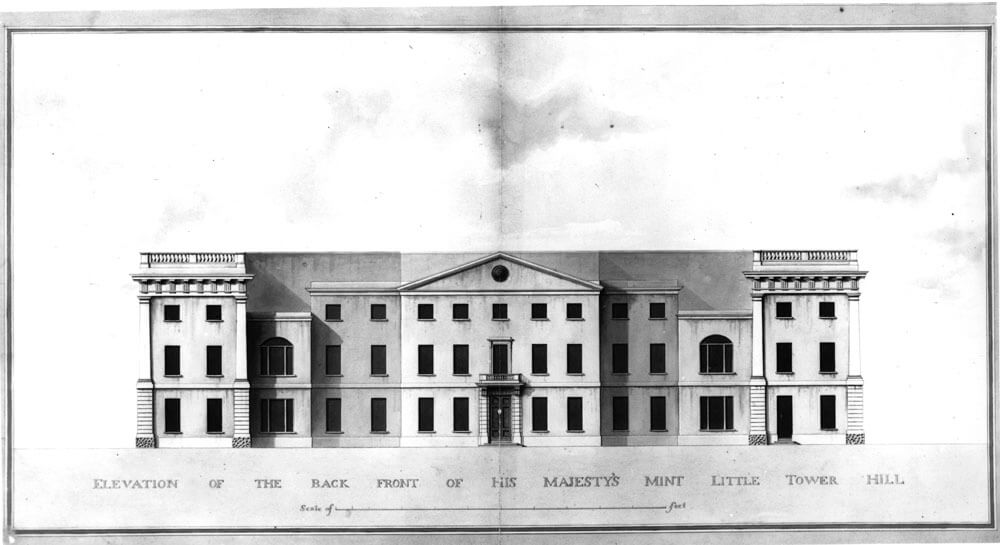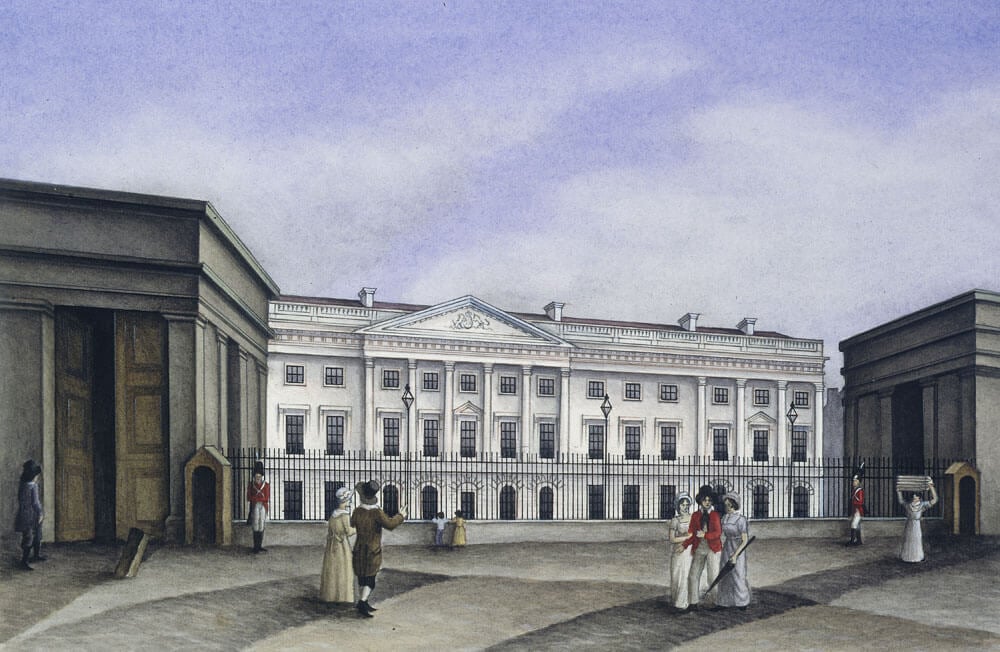The Royal Mint at Tower Hill
The Prince of Wales was sworn in as Prince Regent before the Privy Council in 1811. It was the start of a new era, and one in which the Royal Mint was to experience a change and renewal as the landscape of nineteenth-century London altered around it.
The operations of the Mint had increased substantially during its 500 years in The Tower of London, but it was no longer possible for the Mint to continue to grow and thrive in the cramped conditions there. The acquisition of Matthew Boulton’s faster and more effective steam-powered machinery necessitated a larger, custom-built space for coin production. As a result, a new location was sought and found, just 100 yards away from the Tower, on Little Tower Hill.

The Royal Mint commissioned the surveyor James Johnson and his successor Robert Smirke to design the new building and they produced a classically inspired frontage that was fitting for grandeur of the Royal Mint. It took several years of planning, preparation and building, but it was finally completed in 1809. Mint officers described the new building as ‘stupendous and beautiful’. Not only was it a physically striking building, but the new more efficient layout within brought about a logical flow of operations, and production grew substantially as a result. Tower Hill has since been described as one of the finest buildings in London and still stands today as a powerful visual symbol of Regency elegance.

